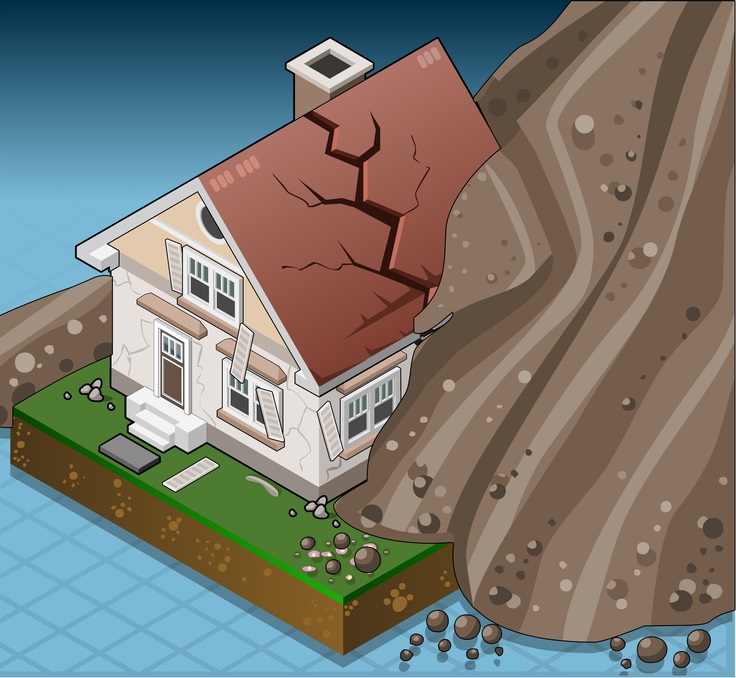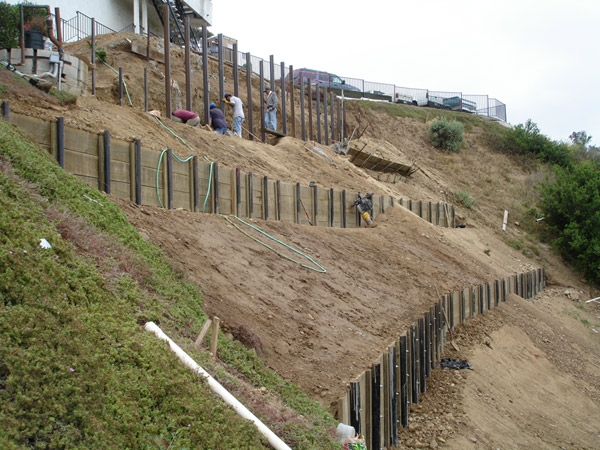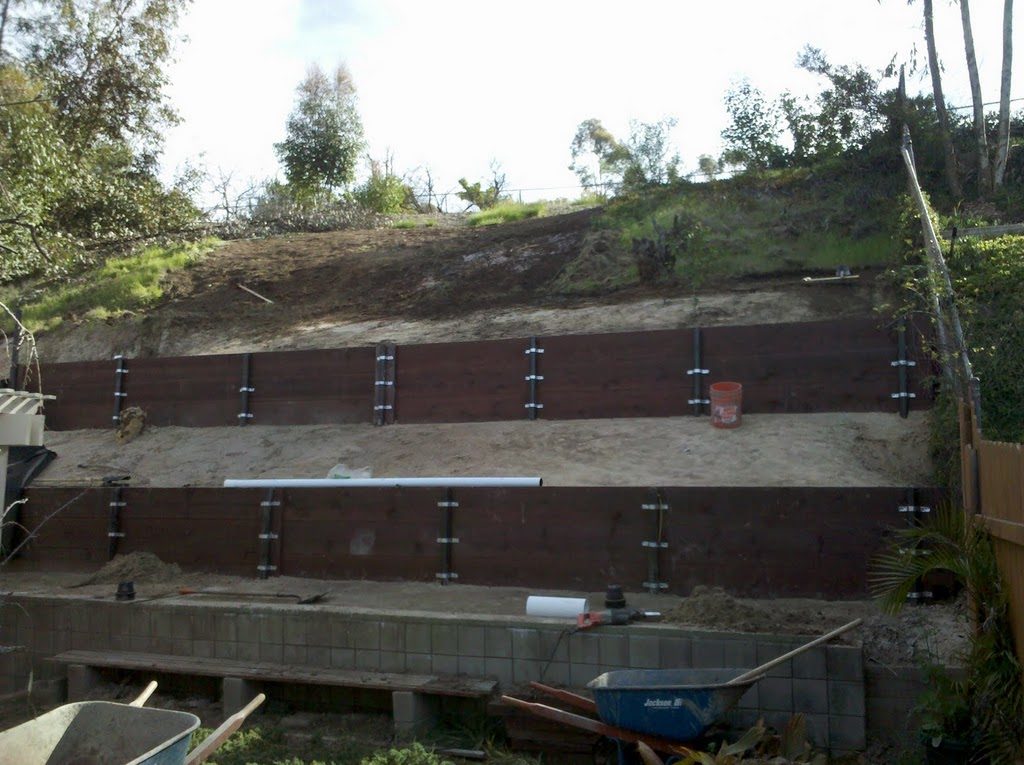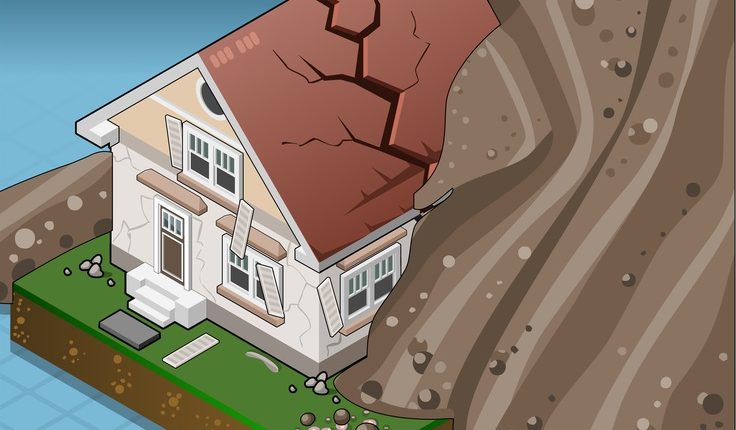
Typically, when we think of landslides, we can imagine something out of a movie: huge walls of mud setting fire to a warpath of destruction. But the truth is that landslides come in all shapes and sizes and believe it or not, they can happen right in your own backyard.
Some of the leading factors that trigger your garden variety landslide include:
- Heavy precipitation
- Erosion
- Bad building practices
- Rapid changes in temperature (e.g. freezing and thawing)
- Natural disasters (e.g. earthquakes and volcanic eruptions)
- Extreme weather, such as periods of heavy rainfall or rapidly melting snow
- Areas without topsoil or shrubbery, or burned by wildfires are vulnerable to landslides
Before a landslide happens, there are signs that your property may be in danger. Be sure to keep an eye out for major changes, such as stormwater runoff patterns, land movements, or major landslides. Also look for gaps between exterior walls, walkways, or stairs and look for crooked fences or trees, doors or windows that are starting to stick, new cracks in foundations or structural elements (plaster, tile, brick), bulging territory near hills or slopes or water breaking through in strange places.
Potential damage from landslides
As more trees are removed to accommodate the growing population, there is more runoff during rains and less water can be absorbed by the soil. This can lead to pits and springs on your property, which can cause worsening erosion and eventually landslide damage.
Some of the most common landslide damage include:
- Pollution. A landslide can damage sewers, fisheries and other public water access areas, leading to pollution, affecting entire communities. A critical aspect of landslide/erosion control services is drainage and stormwater management. Aside from human use, excess water is the leading cause of landslides. To best combat both problems, it can be critical to build a retaining wall or use landscaping to control runoff and prevent potential contamination.
- Weakened slopes/retaining walls. Landslides caused by erosion can do quite a bit of damage to the overall structural integrity of your property. Keep a close eye on these structures to make sure there is no excessive drainage or weakening structures.
- Destruction Foundation. Poor stormwater drainage can cause significant foundation subsidence or subsidence. If you notice uneven or sagging floors, or significant pools of water forming around your foundation, it is critical to contact a foundation repair expert to assess the existing damage and create a plan to correct existing problems .
injury – In addition to property damage and pollution, severe landslides also carry the risk of personal injury. Unstable or weakened structures are a hotbed for accidents, so keep this in mind when accessing the condition of your property.
How to prevent landslides at home
Foot traffic and human use are usually the largest contributors to erosion and landslides. Over time, house projects and other routine activities can put your property through the ringer. The good news is that there are some very simple things you can do to prevent wear and tear.
- Reuse garden waste. Leaves or loose gravel can be used to create drainage on slopes or earthen support structures.
- Redirect rainwater. If you see rainwater pooling or puddle, make sure to direct it away from sloping areas or slopes
To irrigate/install vegetation: While irrigation is good, make sure you don’t install irrigation systems, water sources, or pools near hills or sloping areas. Plant vegetation or use gravel on slopes or earthen structures that need extra support.
Use temporary landslide protection: Sandbags, plastic sheeting, tarpaulins and even burlap can be used to divert water from uncontrolled spills and protect unstable areas.
Professional Landslide Prevention Techniques
In many cases, professional intervention is required. If you notice major damage to your existing structures or properties, you may need to contact an expert to assess your options.
A professional may recommend installing:
retaining walls
Concrete retaining walls: Concrete blocks fit together without the need for mortar. The soil is then packed tightly behind it to prevent weakening and collapse. Concrete retaining walls form curves easily, which is typically a requirement for this stabilization approach.
Retaining walls of steel beams/pipes: These are often used on extreme slopes where a concrete wall is too expensive. The steel beams are usually placed in a pre-drilled hole and encased in concrete.
GeoGrid Systems: GeoGrid textile fabric is a cost-effective approach to rebuilding slopes that have previously given way due to a landslide or mudslide.
Drain systems: For properties with poor drainage, a professional may recommend diverting surface and/or underwater drainage. Stormwater management is a very important part of landslide control services and poor drainage or water management is often the main culprit in landslides.



About Unilited Drilling
Unlimited Drilling & Foundations Inc. was founded in 1993. Over the past 28 years, the company has completed thousands of foundation repair, slope stabilization and drainage projects in Southern California.


Comments are closed.